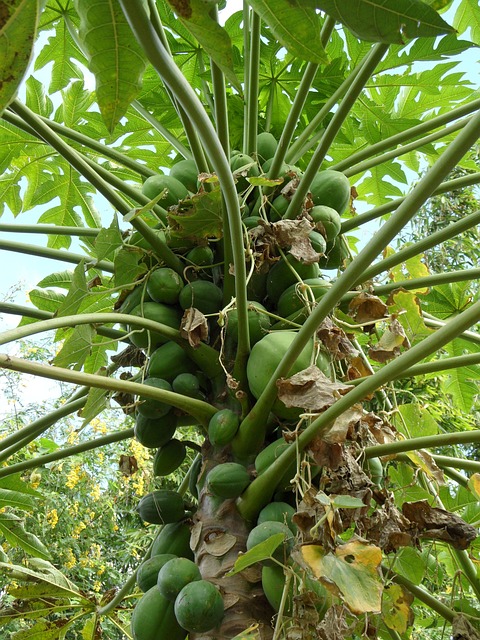Pawpaw trees, also known as Asimina triloba, are native to North America and can be found in a range of habitats from wetlands to dry ridges. These trees are known for their large, oblong-shaped fruit that is often used in cooking and baking. While pawpaws can be a delicious addition to your garden, they can also be invasive and spread quickly. In this blog post, the experts at Tree Services Annapolis tell us about what pawpaw trees are, their potential to become invasive, and how to control their spread.
What are Pawpaw Trees?
Pawpaw trees are deciduous trees that can grow up to 40 feet tall. They have large, tropical-looking leaves that can grow up to 12 inches long and 6 inches wide. In the spring, pawpaw trees produce maroon-colored flowers that emit a sweet, musky odor. The fruit of pawpaw trees is typically harvested in the fall and can be eaten raw or used in recipes.
Pawpaw Trees as Invasive Species
While pawpaw trees are native to North America, they can become invasive in certain areas. When pawpaw trees are left unchecked, they can rapidly spread and outcompete native species, which can negatively impact the ecosystem. Invasive pawpaw trees can also be difficult to remove, as they have an extensive root system and can sprout new shoots from the roots.
Controlling the Spread of Pawpaw Trees
- Hand Removal: One of the most effective ways to control the spread of pawpaw trees is to remove them by hand. This method works best when the trees are small and can be easily pulled up. Make sure to remove as much of the root system as possible to prevent new shoots from growing.
- Herbicides: If hand removal is not an option, herbicides can be used to control the spread of pawpaw trees. Selective herbicides, such as glyphosate, can be used to kill pawpaw trees without harming other plants in the area. Herbicides should be used with caution and according to the instructions on the label.
- Mechanical Removal: Mechanical removal, such as cutting down pawpaw trees or using a stump grinder, can be an effective method of controlling their spread. This method works best for larger trees that cannot be removed by hand.
- Preventative Measures: Preventative measures can be taken to control the spread of pawpaw trees before they become invasive. Regular monitoring of your garden or property can help you identify any new pawpaw trees before they spread. Planting native species in your garden can also help prevent invasive species, such as pawpaw trees, from taking over.
- Encourage Native Wildlife: Encouraging native wildlife, such as birds and small mammals, to your garden or property can help control the spread of pawpaw trees. These animals can help to disperse the seeds of native plants, which can outcompete invasive species like pawpaw trees.
Conclusion
In conclusion, pawpaw trees can be a tasty addition to your garden, but they can also become invasive and spread quickly. Hand removal, herbicides, mechanical removal, preventative measures, and encouraging native wildlife can all be effective methods of controlling the spread of pawpaw trees. If you are unsure about how to control pawpaw trees on your property, consult with a local gardening or landscaping professional for advice. With proper management and control, you can enjoy the benefits of pawpaw trees without the negative impacts of their invasiveness.

